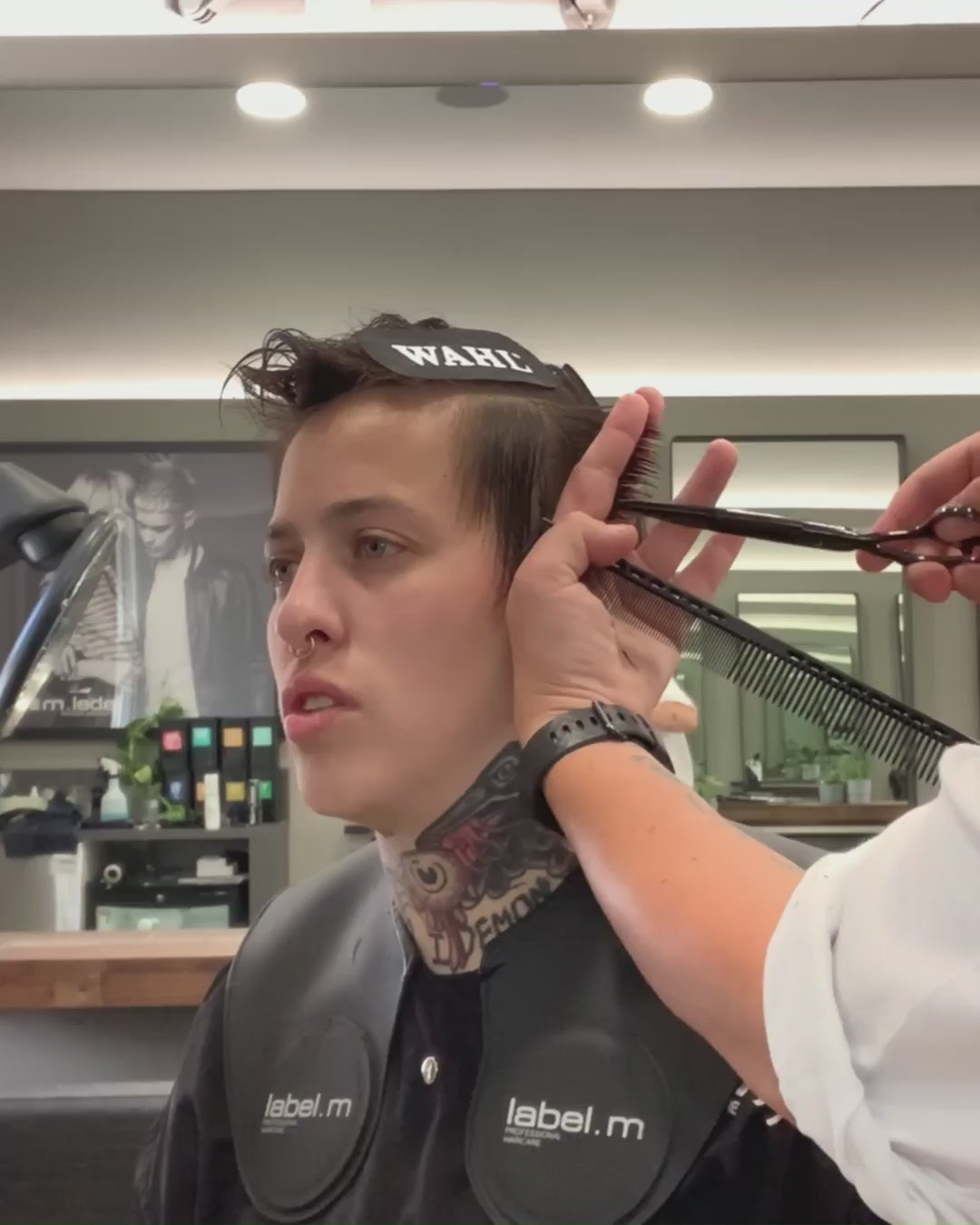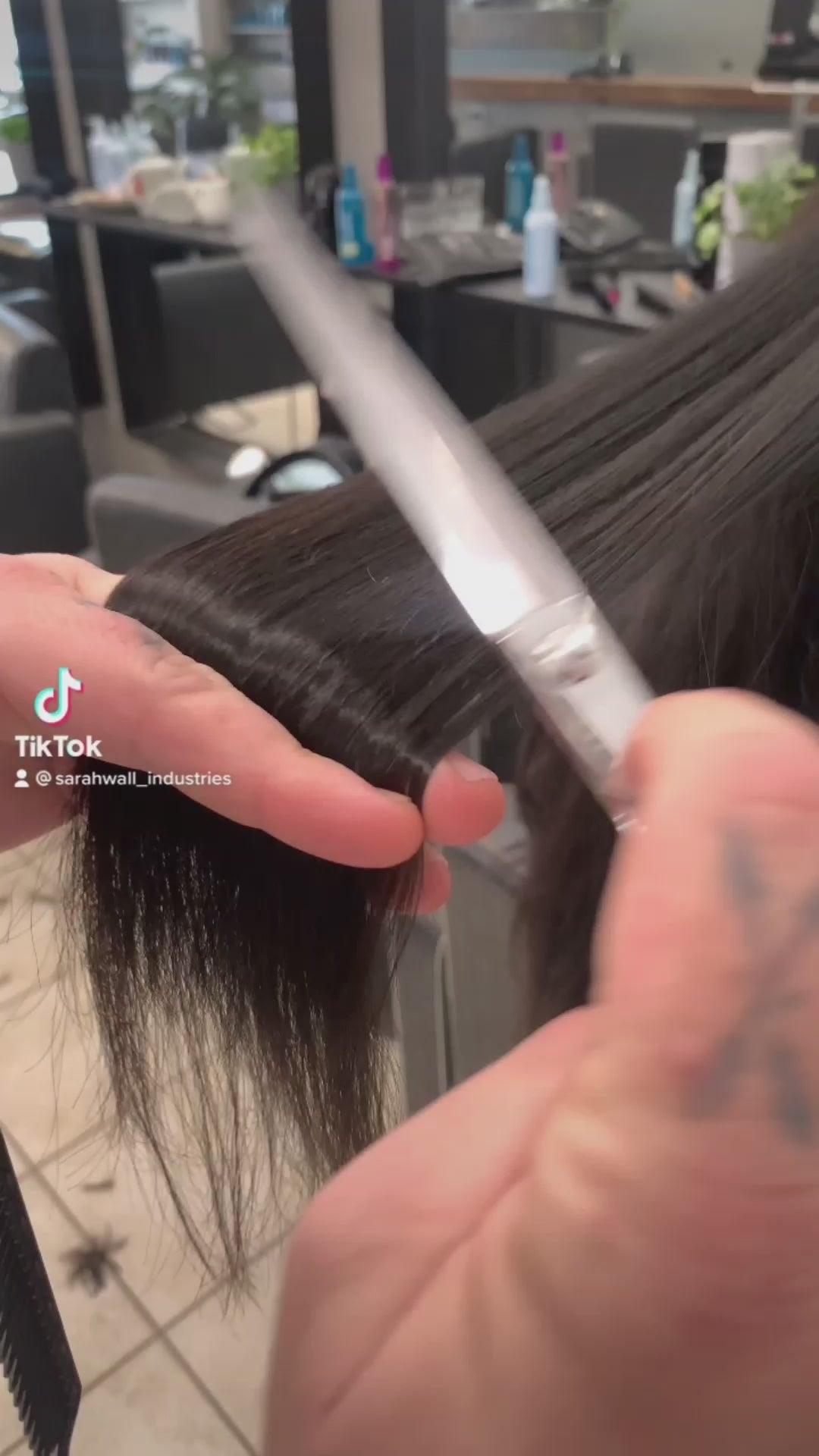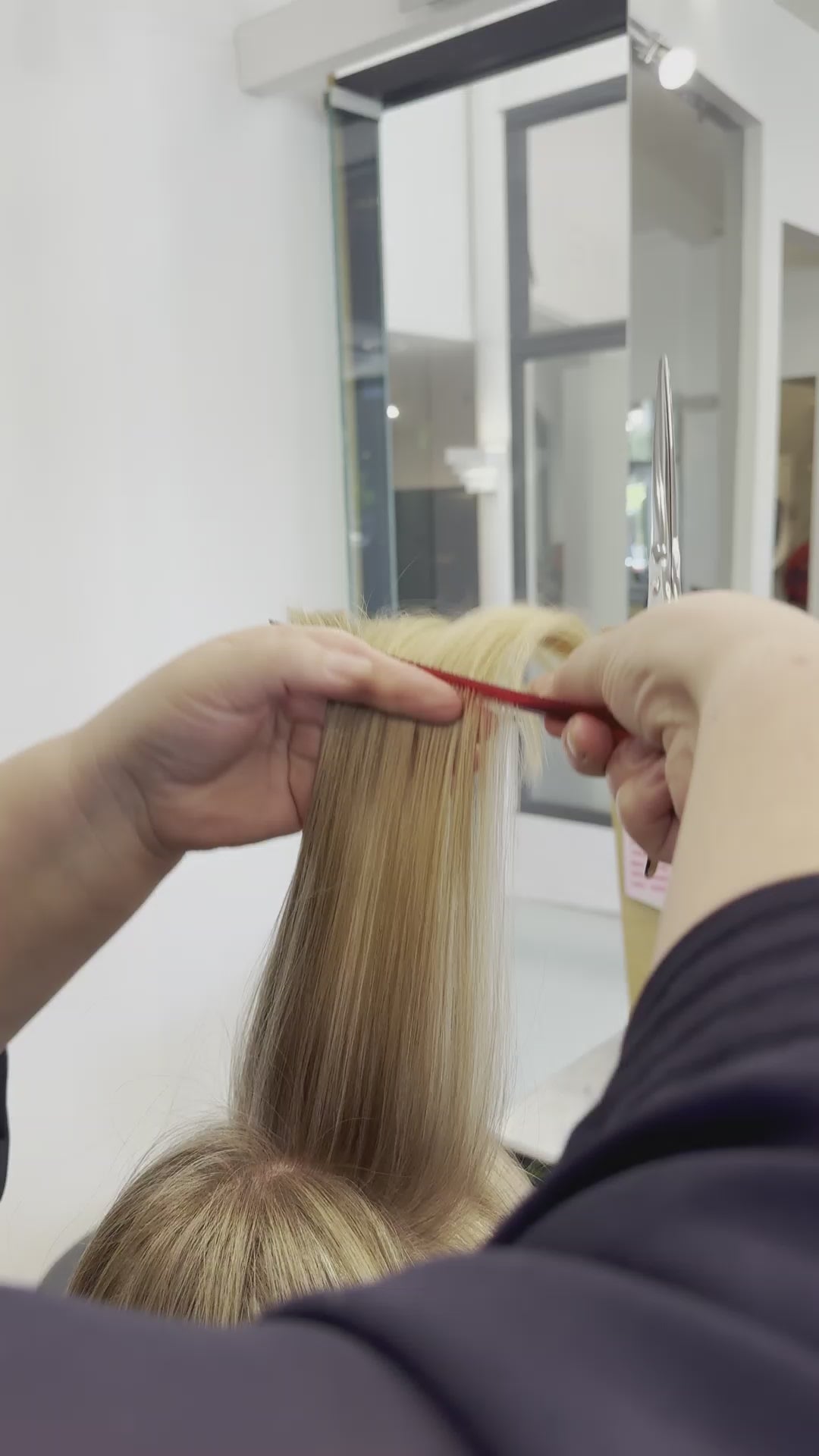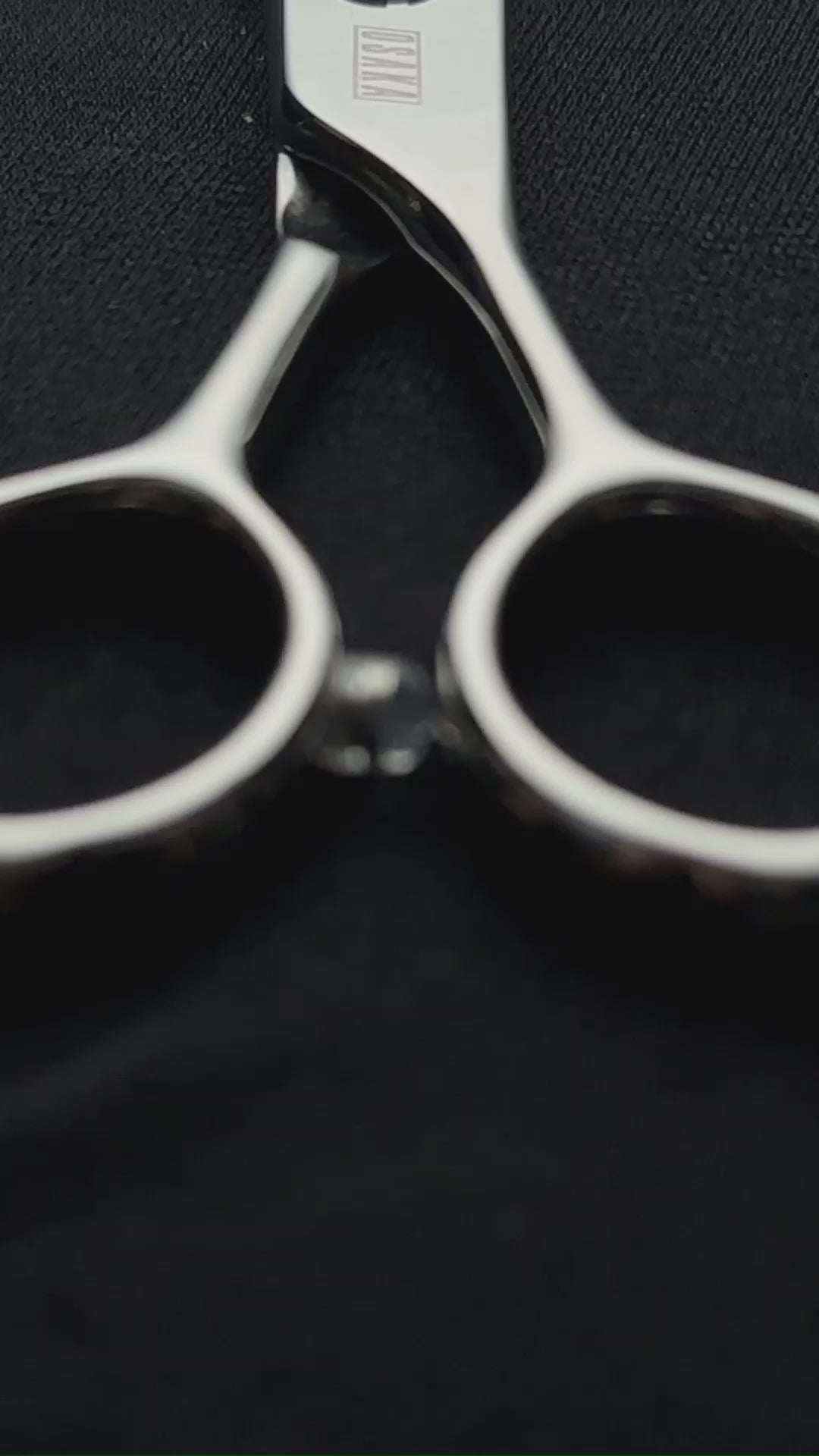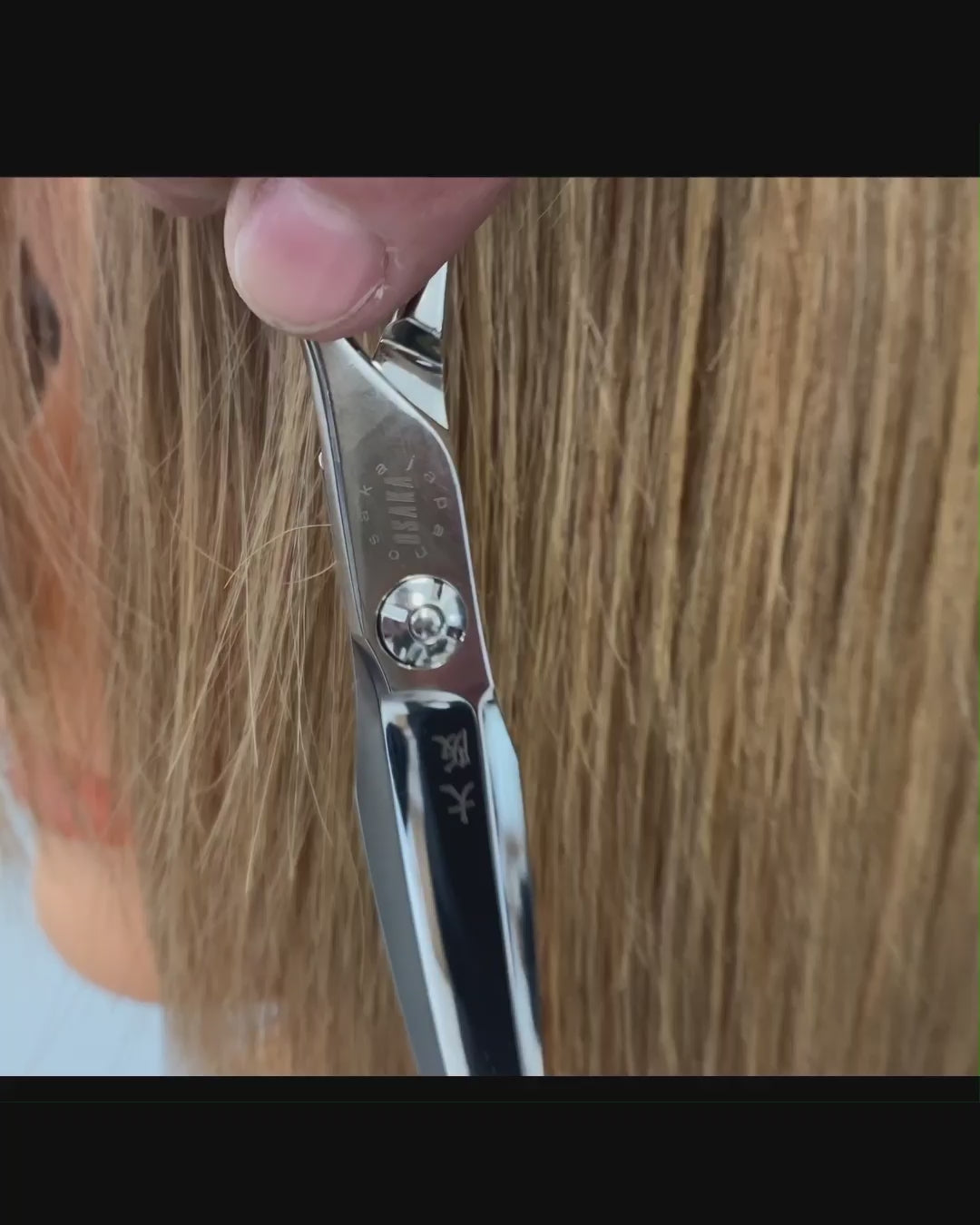Can Hair Thinning Scissors Damage Your Hair? The Truth

Picture this: Your client storms out of your salon, furious about their "ruined" hair, vowing never to return and threatening to blast your reputation across social media. The culprit? Another stylist convinced you that thinning scissors were the problem. But what if everything you've been told about hair damage is completely wrong? What if the real destroyer of your client's locks has been hiding in plain sight, masquerading as common salon practice, whilst your perfectly good tools take the blame?
The truth about do hair thinning scissors damage hair might shock you. And this blog is about to change everything you thought you knew about achieving flawless texture without compromising hair health.
The Shocking Truth About What's Really Destroying Your Client's Hair (Hint: It's Not What You Think)
For decades, stylists have been pointing fingers at thinning scissors as the villain behind damaged hair. This widespread myth has created unnecessary fear around one of our most versatile tools. The reality is, however, further from the truth.
The real culprits lurking in your salon are far more sinister. Poor technique, dull blades, and substandard tools are the true destroyers of hair integrity. Cheap scissors with uneven blade geometry crush hair follicles instead of cutting them cleanly. Neglected maintenance schedules leave blades so dull they tear rather than slice. Improper sectioning techniques concentrate too much thinning in small areas, creating weak points that break easily.
And the most damaging of all? The rush to blame tools instead of examining the technique. This knee-jerk reaction prevents stylists from identifying and correcting the actual causes of hair damage, perpetuating a cycle of frustrated clients and damaged reputations.
The Secret Japanese Method That Makes Hair Thinning Completely Safe
The Science Behind Proper Thinning Technique
Japanese master craftsmen have perfected hair thinning over centuries, developing techniques that protect hair and still achieve stunning results. Their secret lies in understanding hair's molecular structure and working with it (hint: never against it!).
The Japanese approach emphasises gentle, controlled movements that preserve the hair's natural strength. Instead of aggressive chopping motions, master stylists use precise, rhythmic cuts that maintain the hair's structural integrity and remove bulk exactly where needed.
Japanese Steel Precision vs. Cheap Alternatives
The difference between Japanese steel and mass-produced alternatives is like comparing a surgeon's scalpel to a butter knife. Authentic Japanese steel undergoes a meticulous forging process that creates microscopic precision in blade edges. This ultra-sharp edge slices through hair cleanly, leaving smooth, sealed ends that resist damage.
Cheap alternatives often feature poorly aligned blades with microscopic imperfections that catch and tear hair. These irregularities create frayed ends that quickly develop into split ends and breakage, giving thinning scissors their undeserved reputation for damage.
How Blade Geometry Affects Hair Structure
Proper blade geometry is crucial for safe thinning. Japanese-crafted scissors feature precisely angled blades that approach hair at the optimal cutting angle. This geometry ensures each strand is cut with minimal trauma, preserving the hair's natural protective cuticle layer.
Poor blade geometry in cheap scissors creates crushing forces that damage the hair's internal structure. Instead of clean cuts, these tools create compression points that weaken hair fibres and lead to eventual breakage.

5 Deadly Mistakes That Turn Innocent Thinning Scissors Into Hair Destroyers
Wrong Angle Techniques
The most common mistake stylists make is holding thinning scissors at incorrect angles. Approaching hair too aggressively or at sharp angles creates excessive tension that stretches and weakens hair fibres. The proper technique involves gentle, consistent angles that work with the hair's natural fall.
Using Dull Or Low-Quality Blades
Dull blades are hair's worst enemy. Instead of cutting cleanly, they crush and tear hair strands, creating immediate damage and setting the stage for future breakage. Regular maintenance is essential for client safety and satisfaction.
Over-Thinning in One Session
Impatience leads to over-thinning, where stylists remove too much bulk in a single session. This aggressive approach weakens hair structure and creates uneven texture. The Japanese method emphasises gradual thinning across multiple sessions, allowing hair to maintain its strength.
Improper Hair Sectioning
Random thinning without proper sectioning creates weak spots where hair breaks easily. Professional technique requires systematic sectioning that distributes thinning evenly, maintaining hair's overall structural integrity.
Neglecting Aftercare
Many stylists forget that freshly thinned hair needs special care. Without proper aftercare advice, clients may unknowingly damage their newly textured hair through harsh brushing or styling practices.
Warning Signs Your Scissors Are Secretly Sabotaging Every Cut
Recognising when your tools have become dangerous is crucial for client safety. Dull blades often announce themselves through increased cutting resistance and uneven results. If you're applying more pressure than usual or hearing crushing sounds instead of clean snips, your blades need immediate attention.
Visual inspection reveals other red flags: nicked blade edges, visible wear patterns, or loose pivot points all indicate compromised performance. These seemingly minor issues can cause major hair damage when overlooked.
The most telling sign? Client complaints about increased breakage or split ends following thinning services. When multiple clients report similar issues, the problem likely lies with your tools—and not your technique.
Why Low-Quality Scissors Cost You Thousands in Lost Clients (The Hidden Price of Cheap Tools)
The mathematics of cheap tools is brutal. A cheap pair of scissors might seem economical, but the hidden costs are staggering. Damaged hair leads to unhappy clients who don't return and actively discourage others from visiting your salon.
Japanese-crafted scissors represent a different philosophy entirely. These precision instruments protect your reputation in delivering consistent, beautiful results. When clients trust your tools, they trust your expertise, creating loyal relationships that generate thousands in recurring revenue.
The long-term benefits extend beyond client retention. Quality tools reduce physical strain on stylists, preventing repetitive stress injuries that could end careers. They also work more efficiently, allowing you to serve more clients with less effort and better results.

The Professional's Playbook: How Master Stylists Thin Hair Without Fear
Proper Technique Guidelines
Master stylists follow strict protocols when thinning hair. They begin with a thorough consultation to understand the client's hair type, lifestyle, and maintenance capabilities. Sectioning follows precise patterns that ensure even distribution of thinning throughout the style. Rather than random snipping, professionals use systematic approaches that build texture gradually.
Maintenance Best Practices
Professional-grade scissors require professional-grade care. Regular cleaning removes product buildup that can dull blades. Proper storage protects delicate blade edges from damage. Most importantly, professional sharpening maintains optimal performance and prevents the gradual degradation that leads to hair damage.
Timing and Frequency Recommendations
Understanding when and how often to thin hair prevents over-processing. Most clients benefit from thinning services every 6-8 weeks, but this varies based on hair type, growth rate, and desired style. Professional stylists monitor hair health carefully, adjusting timing to maintain optimal condition.
The One Service That Transforms Dangerous Scissors Back Into Precision Instruments
Professional sharpening is the unsung hero of hair health. When performed by experts who understand blade geometry and steel properties, sharpening restores scissors to like-new performance. But it’s not just to keep those blades sharp. It’s about restoring the precise angles and edges that make safe thinning possible.
The question of do hair thinning scissors damage hair often disappears entirely when tools are properly maintained. Regular professional sharpening eliminates the gradual degradation that turns precision instruments into hair-damaging weapons.
DIY sharpening attempts often worsen the problem by creating uneven blade edges or incorrect angles. Professional services use specialised equipment and expertise to restore optimal performance, which results in extending the tool’s use significantly.

Take The Simple Switch And Elevate Your Reputation Overnight
Transform your salon's reputation with a single decision: invest in precision tools that protect both your clients and your career. OSAKA Scissors represents the pinnacle of Japanese craftsmanship, delivering the legendary sharpness and edge retention that generations of master stylists have trusted. Each pair of OSAKA scissors features premium Japanese steel and ergonomic design that minimises fatigue during long styling sessions.
Beyond exceptional tools, we provide professional sharpening services that keep your investment performing at peak levels. Our expert technicians understand the precise geometry required for safe, effective thinning, ensuring your scissors never become the cause of client complaints.
Don't let inferior tools sabotage your reputation. Explore our comprehensive range of professional-grade scissors, accessories, and sharpening services. Experience the difference that true Japanese precision makes in your daily practice.





